Missing Letters Worksheets for Ages 4-7
6 filtered results
-
From - To
Missing Letters Worksheets for ages 4-7 are designed to help young learners master the alphabet and enhance their letter recognition skills. These engaging, printable worksheets enable kids to fill in the blanks where letters are missing, promoting their ability to sequence and identify letters from A to Z. Ideal for early grade children, the exercises make learning fun through colorful, interactive activities. Perfect for both classroom and home use, these worksheets are an effective tool for parents and teachers aiming to build a strong literacy foundation in early childhood education. Download now to support your child's alphabet learning journey!
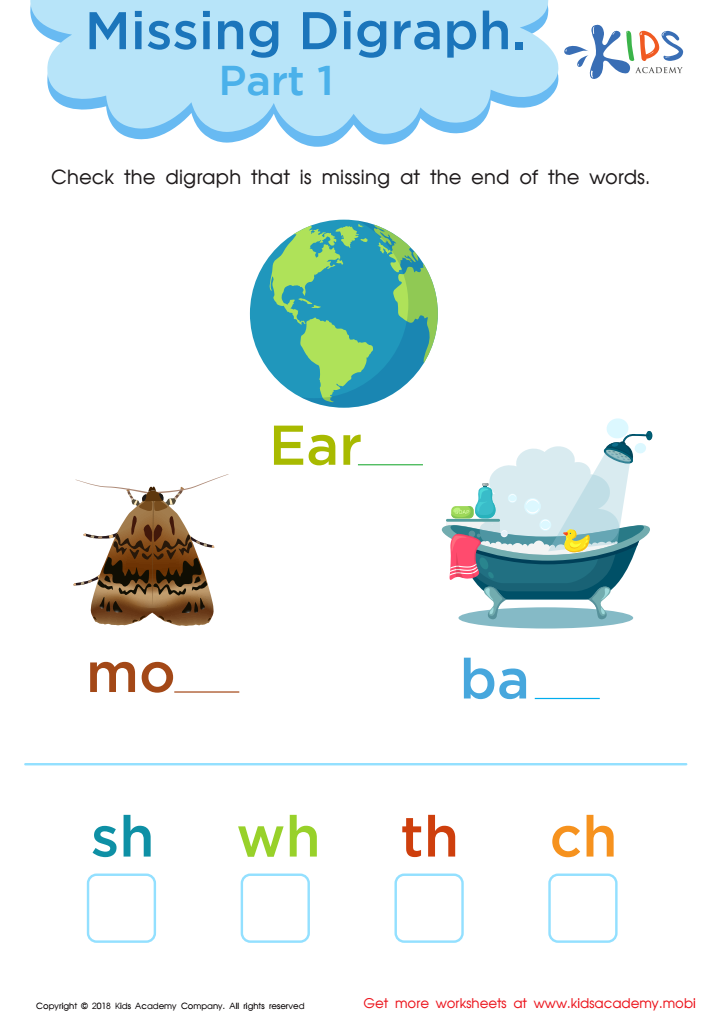

Missing Digraph: Part 1 Worksheet
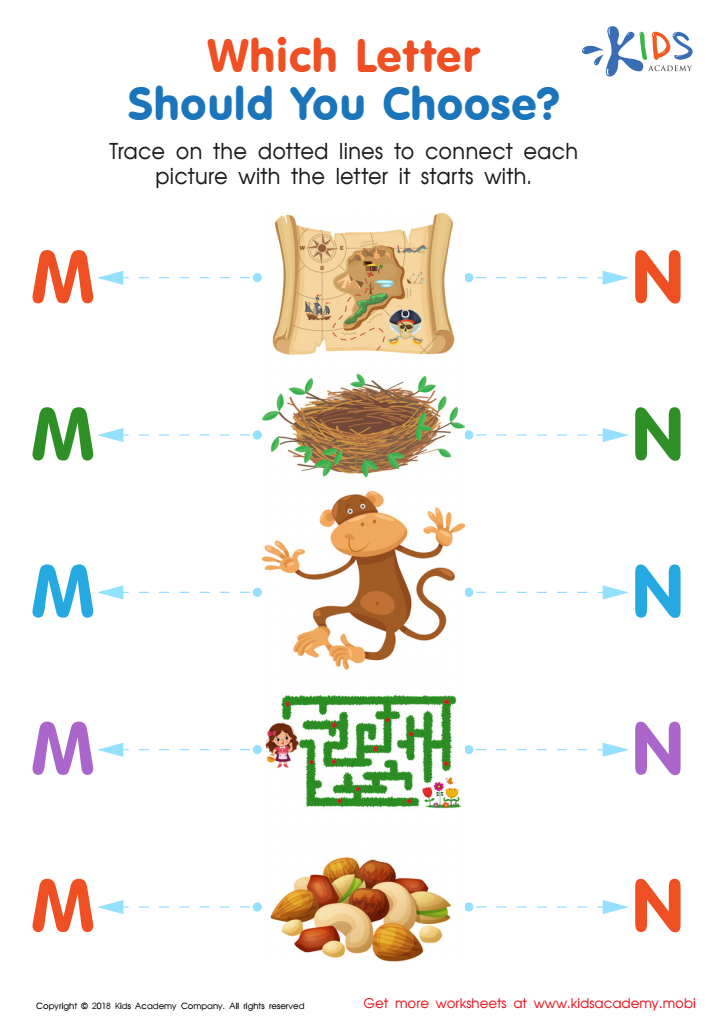

Which Letter Should you Choose? Worksheet
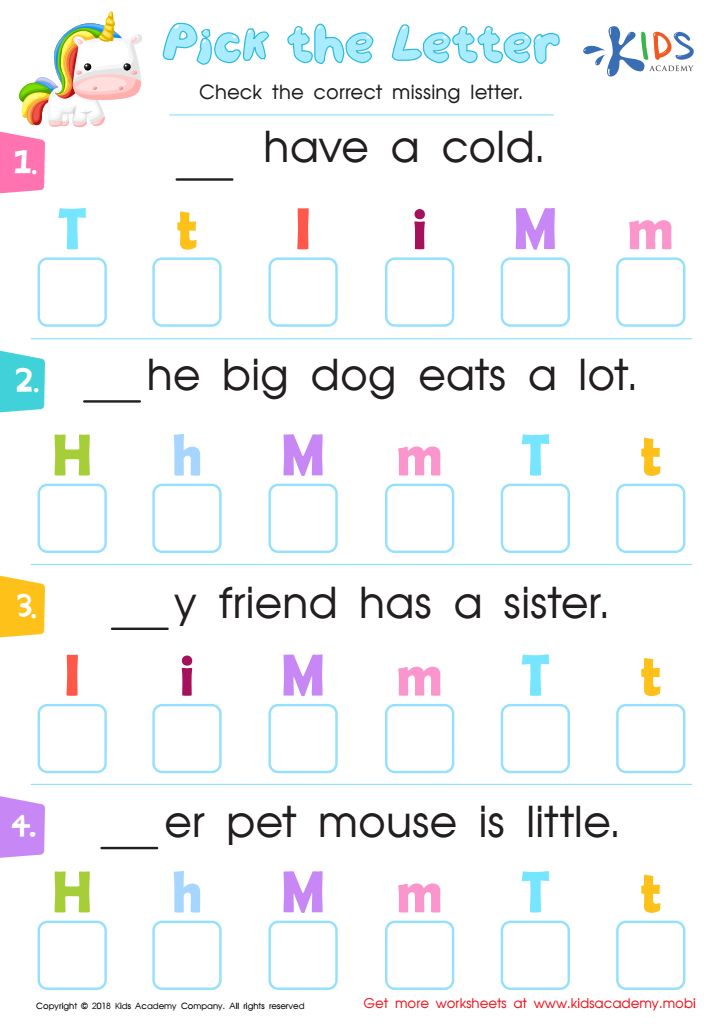

Pick the Letter Worksheet


Missing Digraph: Part 2 Worksheet
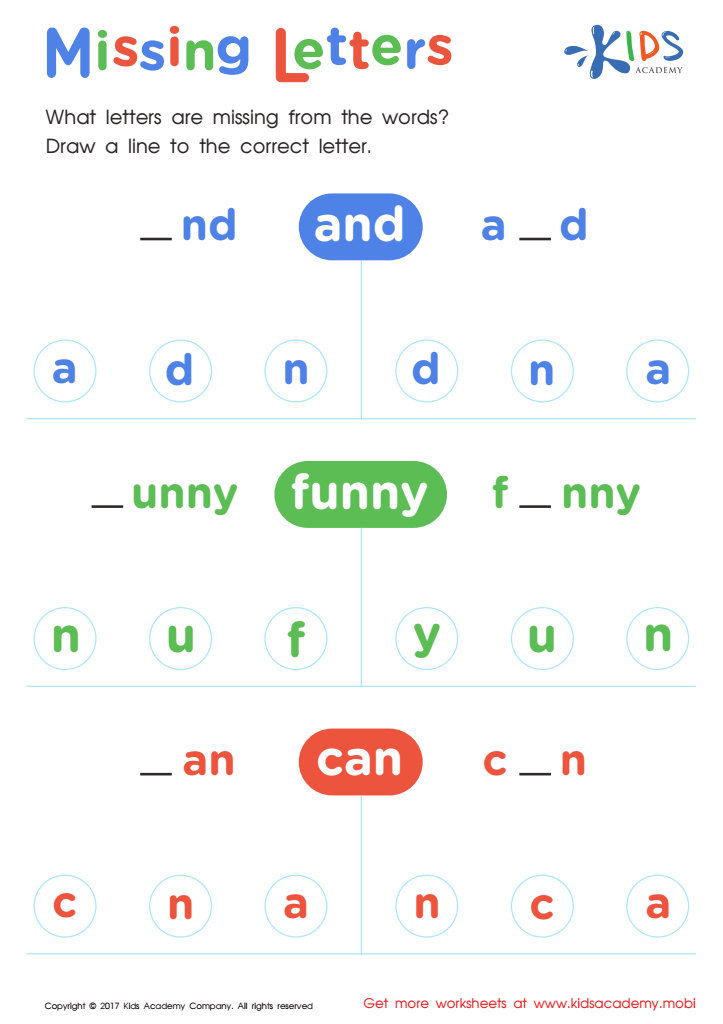

Missing Letters Worksheet
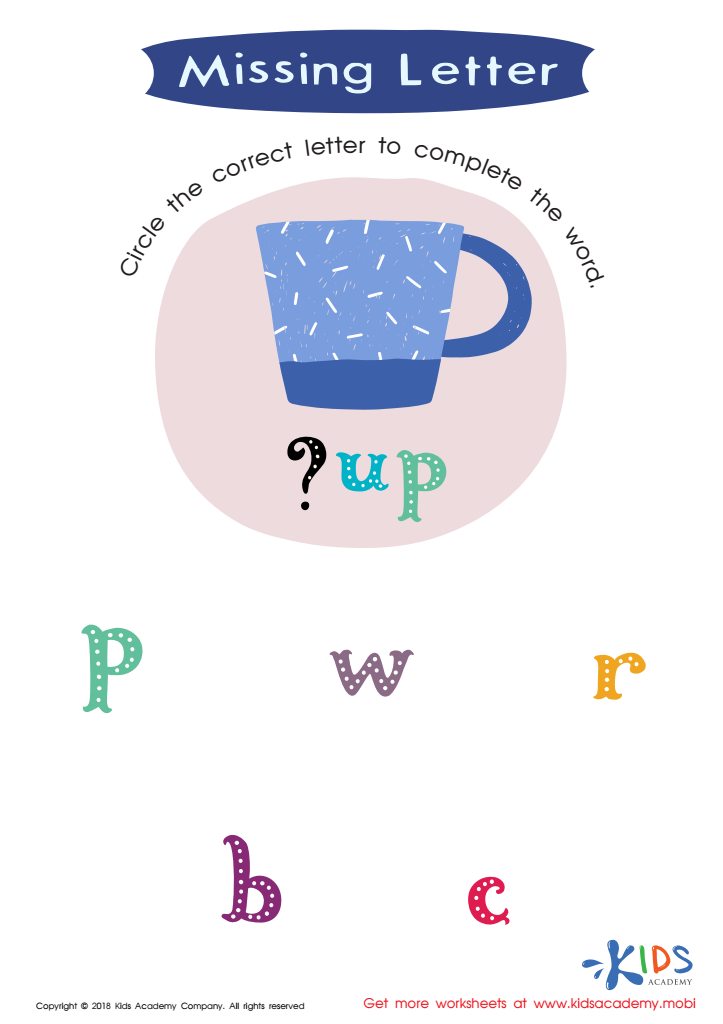

Missing Letter Worksheet
Parents and teachers play a crucial role in the early developmental stages of children, particularly in fostering foundational literacy skills. During the ages of 4-7, children are in the process of learning the building blocks of reading and writing, skills that are essential for their future academic success and overall cognitive development. Activities like "Missing Letters" are particularly beneficial as they help children recognize, recall, and use letters accurately, which is a key aspect of developing phonemic awareness and spelling proficiency.
By caring about and incorporating “Missing Letters” exercises into children’s routines, parents and teachers can support youngsters in improving their ability to identify letter patterns and understand word structures. These activities enhance memory recall and strengthen connections between visual symbols (letters) and their corresponding sounds, thus aiding in the development of decoding skills that are crucial for reading fluency.
Moreover, these exercises turn learning into an engaging activity, which can make children more enthusiastic about reading and writing, setting a positive foundation for their educational journey. By ensuring children gain confidence in their abilities through these fun and interactive practices, parents and teachers are setting the stage for lifelong learning and literacy.
 Assign to My Students
Assign to My Students









